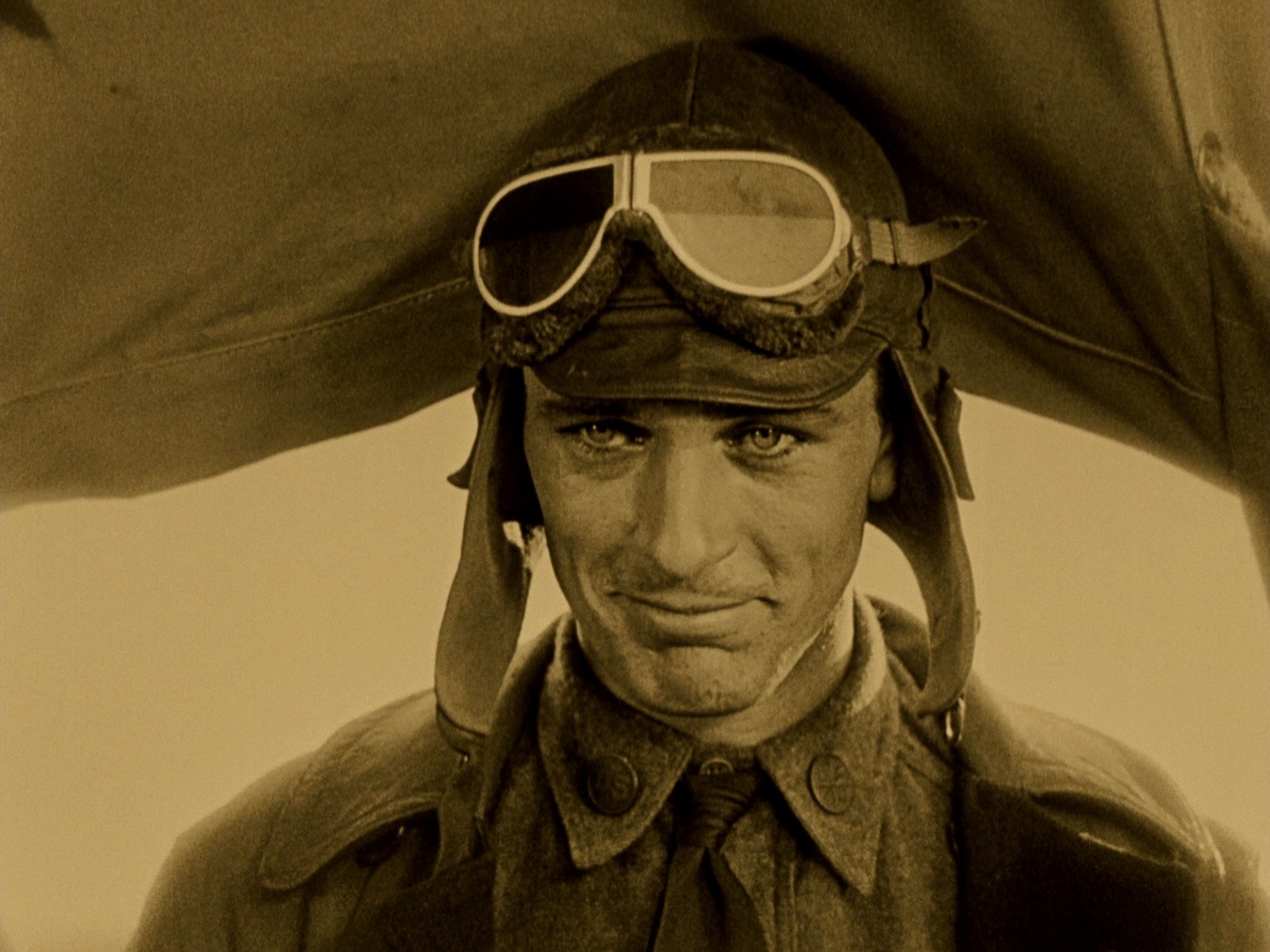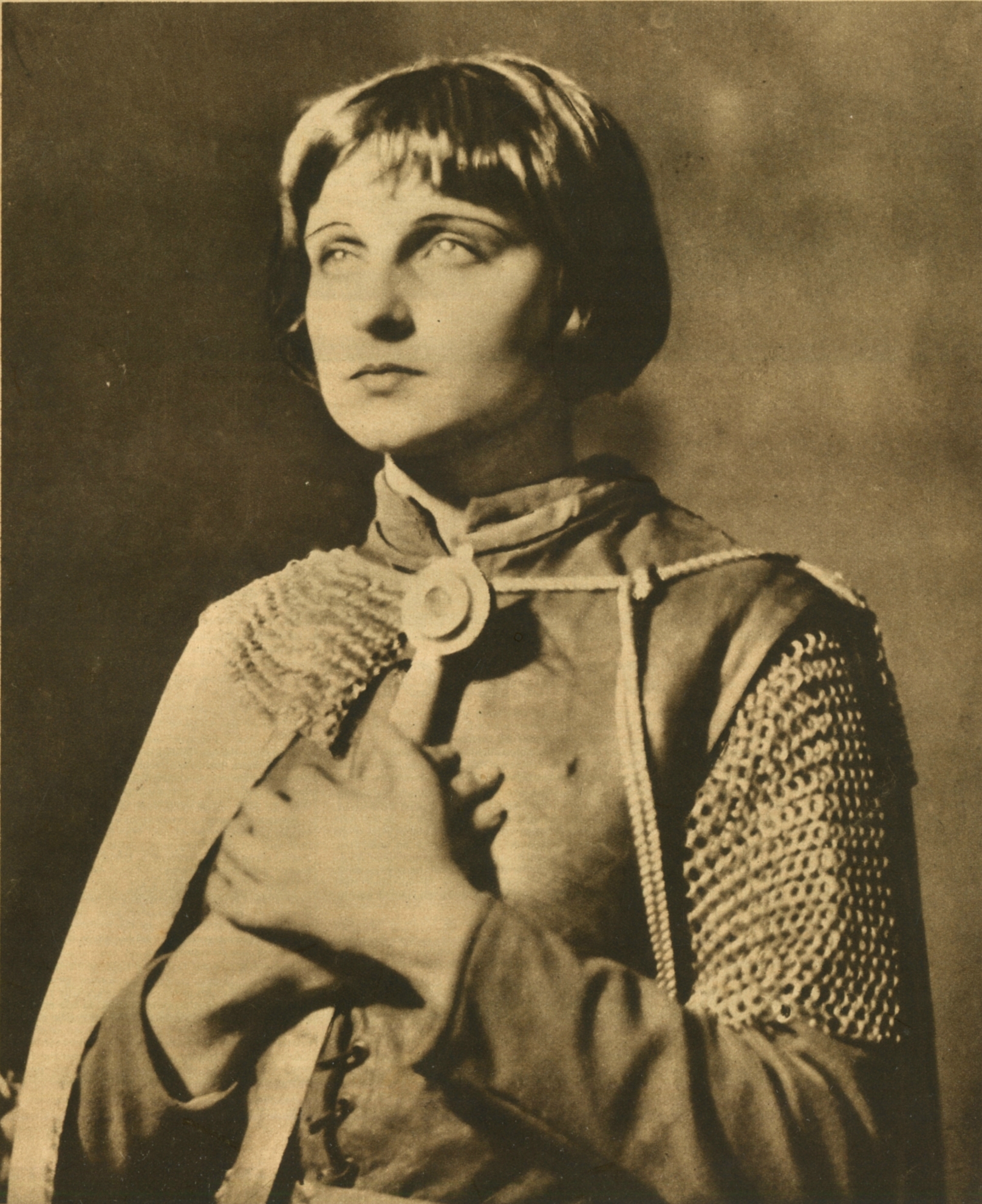摘要:
克里斯·马克1995年为电影的一百周年所被委托创作了《无声电影》装置,他在1996年为杂志《Trafic》写下了《余下的便是沉默》这篇文章。马克在文章里准确地表达了这件作品的本质。这是一个由五个显示器堆叠而成的“塔”,五个被委托方韦克斯纳艺术中心(Wexner Art Center)描述为“超大号”(oversized)的显示器。 克里斯·马克认为,尽管早期电影被称为“无声电影”,但实际上它们并非完全无声,因为至少有钢琴伴奏,甚至有时还有乐队伴奏。他还讨论了电影中的配乐对于观众情绪的影响,以及电影中的对话和字幕如何影响观众的理解。 马克还回忆了他的童年,以及他对早期电影的记忆,包括他对某些电影的深刻印象,以及他对电影中的某些角色的记忆。他还讨论了电影中的黑白影像对于观众的影响,以及电影中的色彩如何影响观众的感知。 马克提到了他对电影的热爱,以及他对电影历史的深深敬意。他认为,电影是一种能够触动人心的艺术形式,能够激发观众的情感,也能够让观众对世界有更深入的理解。 在文章的最后,马克提到了他的一种想法,即电影可能是一种祭坛,观众可以在这个祭坛上挂满他们的想象,用他们自己的形象替换电影中的形象,然后带着这个想象的画面离开,这种感觉是无法用语言表达的,只能用德语的“Sehnsucht”或者葡萄牙语的“saudade”来形容,而剩下的就是沉默。

无声电影。去把一个装置命名为一个从不存在的东西,可能还不如一只猫所能想到的。除了最初的,或者在电影资料馆里的,或者当钢琴家得了重感冒的时候,还从来没有任何东西像无声电影一样。在我的童年时代,他们用什么装置定期演奏相同的曲调,为相同的电影伴奏呢?至少会有钢琴伴奏,或者管弦乐,然后是沃利策管风琴(译注:一种1930年代在电影院的配乐乐器)。我可能属于地球上最后那帮——猫插嘴说:“最后一个”——还记得什么主题配什么电影的人: 《仲夏夜之梦》(A Midsummer Night’s Dream)配《翼》(Wings, 1927,the dogfights),李斯特的《前奏曲》(The Preludes)配《宾虚》(Ben Hur)。这里还有点黑色幽默,希特勒最喜欢的音乐点缀了希伯来王子的传奇故事,这也解释了为什么在德国战争新闻片中使用希伯来王子的音乐比瓦格纳更频繁——但我还是入戏了……
啊,对,钢琴家。我们的俄罗斯人说的“tapeur”(磁带)来自法语的“taper”(击打、敲击),因而创造了一个词。有趣的是,这个词在纯正的法语中并不存在,只存在于俚语中,意思是揩油的人。你看,这里已经有了两个不存在的词。好像所有与“无声电影”这一奇怪概念有关的东西,都是被某种电影反物质(cinematographic antimatter)击溃,而不是被磁带。无声电影,无声时代……二十年代电影院里的沉默远不如安东尼奥尼的老电影。人们已经需要音乐来修复他们的情绪(音乐并不创造情绪,而是修复情绪,就像你修复颜色一样),而钢琴家则忙于修复情绪,情绪被不恰当修复(比如一个错误的和弦)的人则向他开枪: 我记得茹维(Jouvet)用他那明显的“噔噔噔”的声音说:”那个被要求不要枪毙的钢琴家,就是我(le pianiste sur lequel on était prié de ne pas tirer, c’était moi)。”也许我们法国人用“cinéma muet”更贴近主题:哑巴,意思仅仅是人们不说话,这就留下了音乐问题。但事实并非如此。他们在说话,他们说了很多话(准确地说,是《翼》中那些无休止的字幕……对我来说,作为我想象中的《追忆似水年华》的广告词来也很恰当:“世上第一部字幕比画面更多的电影”),他们一句接一句地说着,唯一不同的是你听不到他们的声音,最后,这与其说是哑巴电影的问题,不如说是聋子观众的问题。
说真的,播放音乐并不是避免默片无声的唯一方法:当观众——无论是文盲还是外国人——根本看不懂字幕时,我们的日本人称之为“弁士”(benshi)的角色就会出现,他站在银幕旁翻译、编排或解释印刷文字。黑泽明的哥哥就是这些弁士之一,他的声望确实对大师们早期对电影的迷恋起到了一定的作用。因为,正如他在自传中所说,这些解说员“不仅讲述电影情节,还通过配音和音效,以及对银幕上的事件和画面进行令人回味的描述,增强了电影的情感内涵”。你会发誓自己正在聆听《亨利五世》(Henry V,1944)开头的合唱——你会梦想自己也能以这样的方式看到《一路向东》(Way Down East,1920)。
(五十年代,我在墨西哥也有过类似的经历:对于不会说英语、也看不懂字幕的普通农民来说,一部英语字幕版的美国电影有点令人费解。因此,每周六晚上,社区里唯一识字的人都会站起来,或多或少地以文人的方式对放映进行评论。他们对好莱坞行话的掌握程度有待商榷,但为了不在观众面前丢脸,他们会“努力发挥自己的想象力”。很多时候,这样做的结果令人耳目一新。)
《翼》当然不是我看的第一部电影,但却是我能记得的第一部。时隔约五十年,当我再次观看这部影片时,我对某些情节的清晰记忆令我印象深刻。不同的是:我非常清楚地记得女主角是克拉拉·鲍(Clara Bow),毫无疑问,真的毫无疑问。而至于男主角,我记得是加里·库珀(Gary Cooper)。然而,我发现年轻的加里只演了一场戏,而且在第一卷的结尾就被杀了。我想这就是如何造星:一个动作,一个微笑,你记住的就是他,而不是当时负责泡妞的那个模糊的年轻人。

这种记忆显然是人们对所谓默片时代着迷的原因。但是,即使在这些精确的、确定的电影幻灯片之前,也有一段混乱的时期,就像任何自尊的宇宙论一样,神和女神的形象模糊不清,统一、无序、充满空隙和黑洞,那是一段总是出现在结构化神话之前的朦胧时期。在我幼年的记忆中就有这样的影子。我无法想象他们是真实的人(我怎么能理解电影制作的过程?),而是某种机器,一种曲柄和轮子的复杂结构,为了使这些印第安人和牛仔的形状动起来(这些记忆通常是由这些东西组成的)——请注意,当时我就简单地发明了今天的动画用来合成图像的概念;对一个蹒跚学步的孩子来说,也算是一些先见之明。


然后是马克·贾斯丁(Marco de Gastyne)的圣女贞德和西蒙娜·热纳瓦(Simone Genevoix)的特写镜头。这可能是我第一次在 44 x 33 英尺的银幕上看到一位贵妇人的脸被放大(即使是克拉拉·鲍也没有达到这样的比例),但我不认为这一数量现象本身就能解释我所处的兴奋状态。我无法用其他方式来形容,只能用漫画式的拟声词来形容,比如 “砰!”“咚-咚!”“碰-碰!”“抖!” ——这是把声音拍成电影的另一种方式,对于一个 7 岁的孩子来说,这些声音大多难以辨认,但我后来清楚地发现,这才是真正的“浪漫”。几年前,法国电影资料馆发行了一部修复精美的《圣女贞德的精彩人生》(La merveilleuse vie de Jeanne d’Arc,1929)拷贝,我发现自己就像坐在离一位迷人的老太太不远的地方,她丝毫没有怀疑自己曾是我的初恋情人。
也许,严格来讲,正是这种前历史的电影记忆状态,让我对电影产生了遐想,甚至超过了我与克拉拉·鲍和西蒙娜·热纳瓦的童年之恋。这是一种先于理解、先于知觉、先于影评人和影评分析的千年前的感知状态。这是一种Ur-Kino,一种起源电影,更接近阿佛洛狄忒(Aphrodite)而非嘉宝(Garbo)。它的主要特征当然不是沉默——我想我已经证明了这一点——而是另一种缄默,另一种比文字更有意义的,一种信号的抹除:黑白,抹去色彩。
每个人都知道色彩也曾出现过,就像音乐一样。彩色系统已经准备就绪,有时还用于提高声誉。前面提到的弗雷德·尼布罗(Fred Niblo)的《宾虚》中的一些镜头被涂上了颜色。莫舒欣(Moszhukhin)导演的《卡萨诺瓦》(Casanova)被涂上了色彩。夜景通常被染成蓝色,而一些旧年代片段则被棕褐色包裹。然而,半个世纪以来,电影始终坚持黑白画面,我不是马克思主义者,不能仅用经济因素来解释这一点。就像安哲罗普洛斯(Angelopoulos)笔下的鹳鸟一样,电影业的集体无意识屏住了呼吸,暂停脚步,在加入现实主义表现的主流之前,享受着感知的特权阶段,仿佛一个孩子为了保留童年的特权而努力避免太快长大一样。就像摄影,拍立得出人意料的优点让人们立刻获得了色彩,而电影则决定暂时留在这个快乐无色的新世界。在这个由纵欲之人所从事的行业里,我们突然遇到了一种具有纯粹禁欲主义特征的选择:少即是多,失即是得。电影和摄影摒弃了色彩化宇宙的虚荣,开始描绘一个新帝国的版图,在这个新帝国里,灰色的阴影细腻地描绘了人类的各种尺度。(高尔基在 1896 年于诺夫哥罗德首次观看卢米埃尔电影机后,描述了“影子王国”)。人们开始做黑白的梦。每个人都听过这样一句话:“你的梦是彩色的吗?”请问,如果不是电影为我们提供了一种新的方式来看待梦境,我又怎么会梦到与我所看到的不一样的世界呢?我相信,直到 1900 年左右,人们还在做着彩色的梦,恐怕 2000 年以后,人们还会这样做。与此同时,电影经理们已经战胜了无意识。在这个可怕的二十世纪带给我们的种族灭绝、艾滋病和情景喜剧之间,提供一个颗粒细腻、高对比度、全色 B 和 W 的个人梦境的世纪。(这里有一个问题:特德·特纳会做黑白梦吗?简(Jane),如果你读到这篇文章,请打电话给我)。
事实上,这种对色彩的拒绝远比Ur-Kino本身更为深刻。它只是对大自然原始诱惑系统的一种拒绝。如果我们和克劳德·古丁(Claude Gudin)一样认为,“大约 30 亿年前,在偶然性和必然性的推动下,一些微生物开始使用色彩和香味相互诱惑,它们通过啃食阳光,发明了光合作用(Photosynthesis)”,那么选择黑白色调就无异于傲慢地否认我们的生物遗产,是一种主张人类内在对抗大自然抚慰性饥渴的方式。但是,如果古丁竟然说(我概括为)“色彩即性”,这是否意味着黑白片是无性的?或者说,这个突然出现的,完全没有我们惯用的(和基本的)参照系统的世界,吸引着我们必须在自己的内心寻找这些系统——就像音乐迫使我们创造一个内心空间,而绘画则轻而易举地提供了外部空间?那么,全色胶片(panchromatic film)就是我们可塑灵魂的音乐,是用我们赤裸的黑白之手重塑诱惑的一种方式。当我开始放映黑和白的电影片段,并亲自用黑和白来拍摄这次实验时,我只是想以一种轻松、朴实的方式,用我的方式来庆祝电影艺术的一百年。上帝不允许我用一种庄严的方式来理论化这一切:只有愉悦,或者说甜蜜的悲伤,才能与那个时代已穷途末路的荣耀相称。但更简单地说,从长达 30 亿年的毒瘾中解脱出来,难道不是一件有趣的事情吗?
在墨西哥,我发现的不仅仅是弁士传统的存续。在电视还未普及的年代,收音机本身就是稀罕物,而我发现的是一些技术工具祭坛般的地位,一种媒介公开宣称的目的与实际功能之间彻底的差异。在我居住的小村庄里,每家每户的收音机都整天开得震天响,而主人却去了田里。它的存在只是为了存在,而不是为了收听,就像一把火,唯一的目的是燃烧,而不是点燃或取暖。也许,这个装置的目的就是要成为这样的祭坛:在这里,观众可以流连忘返,从永恒的火焰中撷取一些东西,沉思这些黑白冒险,或许可以将我的影像与他或她的影像进行对比,将凯瑟琳·贝尔霍贾(Catherine Belkhodja)的美丽面容换成一张更亲近、更亲切的面容,然后带着想象中的画面离开,在他/她内心深处的放映室里,带着德国人称之为“Sehnsucht”,巴西人称之为“saudade”的那种无法翻译的感觉,余下的便是沉默。
翻译:沙皮狗
Silent Movie. To give an installation the name of something that never existed is probably less innocent than the average cat may infer. There was never anything like silent cinema, except at the very beginning, or in film libraries, or when the pianist had caught a bad flu. There ever was at least a pianist, and soon an orchestra, next the Wurlitzer, and what contraptions did they use, in the day of my childhood, to play regularly the same tunes to accompany the same films? I’m probably one of the last earthlings – the “last,” says the cat – to remember what themes came with what films: A Midsummer Night’s Dream on Wings (the dogfights), Liszt’s The Preludes on Ben Hur. A touch of humour noir here, to think that the saga of the young Hebrew prince was adorned by Hitler’s favourite music, which in turn explains why you hear it more often than Wagner on the German war newsreels – but I get carried away…
Ah, yes, the pianist. The tapeur as we Russians say, from the French taper (to hit, to strike), thus coining a word that, interestingly enough, doesn’t exist in pure French, only in slang, where it means a moocher. So you see, already two non-existences listed. As if everything connected with that strange “silent movie” concept was struck, not be a tapeur, but by some sort of cinematographic antimatter. Silent movie, silent era… There was considerably less silence in a movie house of the Twenties than, say, in a vintage Antonioni. People already needed music to fix their emotions (music doesn’t create emotions, it fixes them, like you fix colour), and the pianist was busy fixing emotions, and people whose emotions had been improperly fixed (a wrong chord, for one) reacted by shooting at him: I remember Jouvet, with his unmistakable staccato, “le pianiste sur lequel on était prié de ne pas tirer, c’était moi.” Perhaps we Frenchmen are closer to the point by using “cinéma muet”: mute, meaning simply that people didn’t speak, which left the music question open. But even that wasn’t true. They were talking, they were talking a lot (those interminable captions in Wings precisely… Not so farfetched to me to herald my imaginary Remembrance of Things Past with the advertising line: “The first movie where the captions take more space than the image”), they were articulating sentence after sentence, the only difference was that you didn’t hear them and that, finally, it was less a case of mute movies than of deaf audiences.
To be true, playing music wasn’t the only way to prevent the silent films from being silent: when they public simply didn’t understand the captions – be they illiterate, or foreigners – then appeared the character we Japanese call the benshi, “the narrator,” who stood beside the screen to translate, or arrange, or interpret the printed text. Kurosawa’s brother was one of these narrators, and the prestige of his function did play a part in the Master’s early fascination with movies. For, as he puts it in his autobiography, these benshi “not only recounted the plot of the films, they enhanced the emotional content by performing the voices and sound effects and providing the evocative descriptions of the events and images on the screen.” You’d swear you’re listening to the Chorus at the beginning of Henry V – and you dream of having seen Way Down East narrated that way…
(I had a similar experience in Mexico in the Fifties: an English-speaking, subtitled version of a US movie was sort of cryptic for the ordinary peasant who didn’t speak English, nor could read the subtitles. So every Saturday night the only member of the community reputed literate would stand and comment on the screening, more or less the benshi way. Their mastery of the Hollywood lingo being debatable, they “worked on their imaginary forces” not to lose face in front of the audience. More than often, the result was quite refreshing.)
Wings is certainly not the first picture I saw: it’s the first I remember – quite vividly. When I saw it again, after a lapse of some fifty years, I was struck by the crystal-clear memory I had kept of certain sequences. With a difference: as I had no doubt, really not, about the leading lady (Clara Bow), on the men’s side I remembered Gary Cooper as the start. Yet I discovered young Gary had just one scene and was killed at the end of Reel One. I suppose this is what makes a star: one gesture, one smile, and it’s him you remember, not the vague young man who was then in charge to get the girl.
Next came Gastyne’s Joan of Arc and the close-ups of Simone Genevoix. It was probably the first time I saw a dame’s face enlarged on a 44 x 33-ft screen (even Clara Bow didn’t attain such proportions) but I don’t think this quantitative phenomenon explains by itself the state of exhilaration I found myself in. I couldn’t describe it otherwise that with comic-strip onomatopoeias like “Wham!,” “Thud-thud!,” “Bump-bump!,” “Shudder!” – another way to put sound on film, mostly indecipherable for a seven-year-old boy, but which I identified clearly, later on, as the true symptoms of Romance. And when some years ago the French Cinémathèque issued a beautifully restored copy of La merveilleuse vie de Jeanne d’Arc, I found myself sitting not far from a charming old lady, who didn’t suspect for one minute she had been, literally, my first love.
Such memories obviously account for one’s fascination with the so-called silent era. But even before these precise, identified filmic flashes, there is, like any self-respecting cosmogony, a period of chaos, vague images of gods and goddesses, united, disorderly, full of gaps and black holes, that shadowy period that always comes before the structured mythology. I find in my early childhood memory such shadows. I couldn’t imagine they were real people (how could I comprehend the process of filmmaking?) but some sorts of machines, a complex organization of cranks and wheels aimed at animating these shapes of Indians and Cowboys (the usual stuff these memories are made of) – by which, mind you, I was simply inventing the concept of animated synthetic images of today; some foresight for a toddle.
Perhaps it’s that, strictly speaking, pre-historic state of film memory that carried me toward this evocation, even more than my amours enfantines with Clara Bow and Simone Genevoix. The idea of a state of perception anterior to understanding, anterior to conscience, anterior by millenniums to film critics and analysis. A kind of Ur-Kino, the cinema of origins, closer to Aphrodite than to Garbo. And whose main feature was certainly not silence – I guess I proved it – but that other kind of mutism, the muffling of another kind of signal, much more meaningful than the words: the erasing of colors, the Black-and-White.
Everybody knows color was there too, like music. Color systems were ready, and sometimes used for prestige. Some sequences of Fred Niblo’s aforementioned Ben Hur were painted. Moszhukhin’s Casanova was tinted. Night scenes were often wrapped in blue and period sequences in sepia. Yet for half a century cinema remained true to black-and-white, and I’m not marxist enough to explain it solely by economic factors. It’s as if the industry’s collective unconscious had held its breath, suspended its step, like Angelopoulos’s stork, to enjoy a privileged stage of perception before joining the mainstream of realistic representation, like a child who tries to refrain from growing up too fast in order to retain the privileges of childhood. Like photography, where color was immediately available by the unexpected virtues of a potato slice, cinema decided to remain for a while in this happy new colorless world. In a trade carried on by people who were everything but ascetical, suddenly we meet a choice that had all the characteristics of pure ascesis, where less is more, and where loss is gain. Abandoning the futile prestiges of a colorized universe, cinema and photography began to draw the map of a new empire where shades of grey where there to detail the various scales of humankindness. (The Kingdom of Shadows Gorky was describing after his first view of the Lumière Cinematograph in Nizhy Novgorod, 1896.) And people started to dream in black-and-white. Everybody has heard the sentence: “do you dream in colors?” And why, pray thee, should I dream the world otherwise than I see it, if cinema hadn’t been there to substitute a new way to look at dreams? I am convinced that until year 1900 or so, people dreamt in colors, and I’m afraid that after year 2000 they shall do so again. In the meantime, managers have won over the unconscious. All that this awful twentieth century will have brought us, between genocides, AIDS, and sitcoms, will have been one century of fine grain, high-contrast, panchromatic B and W personal dreams. (There a question arises: does Ted Turner dream in black-and-white? Jane, if you read this, gimme a call.)
In fact, this refusal of color goes far deeper than the Ur-Kino itself. It’s simply a refusal of nature’s original system of seduction. If we believe with Claude Gudin that “around three billion years ago, with Chance and Necessity getting things going, a seduction process using colors and perfumes got under way amongst some micro-organisms who, by nibbling away at the sunshine, invented Photosynthesis,” the choice of black-and-white is nothing less than a haughty denial of our biological heritage, a way to assert man’s inner resources against nature’s consoling paraphernalia. But if Gudin goes as far as saying (I summarize) “color is sex,” does that imply that black-and-white is sexless or rather that this sudden apparition of a world completely deprived of our usual (and basic) systems of references draws us to the necessity of finding of these systems within ourselves – just as music forces us to invent an inner space where painting provides the outer space too easily? The panchromatic film would then be the music of our plastic souls, a way to reinvent seduction with our bare, black-and-white hands. When I began to play with B and W film clips, and to film in B and W myself for this experiment, I just wanted it to be a light, unpretentious way to celebrate in my manner one hundred years of cinematography, and God forbid that I theorize all this in a solemn way: only the pleasure, or is it sweet sorrow, to part with the already doomed glory of that era. But to put it more simply, wasn’t it fun to free oneself from a three-billion-year-long addiction?
In Mexico, I didn’t discover only the persistence of the benshi tradition. In these pre-television days, radio itself was a rarity, and what I discovered was the altar-like status of some technical tools, the total discrepancy between a medium’s avowed aims and its real function. In every house of the little village I lived in, radio screamed at full blast, all day, while the owner went to the fields. It was there simply to be, not to be listened to, like a fire whose sole purpose is to burn, not to light or to warm. Perhaps this installation aims to be just that kind of altar: the sheer exposure to film magic, free from anecdote or direct emotions, where the viewer may hang around, pick something of the perpetual flame, brood over these adventures of black-and-white, change perhaps my images against his or hers, replace Catherine Belkhodja’s beautiful face by a closer and dearer face, and go away with an imaginary picture unrolling within his/her deep inner screening room with that untranslatable feeling we Germans call Sehnsucht, and we Brazilians saudade, and the rest is silence.
